The NVIDIA GeForce GTX 1660 Ti Review, Feat. EVGA XC GAMING: Turing Sheds RTX for the Mainstream Market
by Ryan Smith & Nate Oh on February 22, 2019 9:00 AM ESTBattlefield 1 (DX11)
Battlefield 1 returns from the 2017 benchmark suite, the 2017 benchmark suite with a bang as DICE brought gamers the long-awaited AAA World War 1 shooter a little over a year ago. With detailed maps, environmental effects, and pacy combat, Battlefield 1 provides a generally well-optimized yet demanding graphics workload. The next Battlefield game from DICE, Battlefield V, completes the nostalgia circuit with a return to World War 2, but more importantly for us, is one of the flagship titles for GeForce RTX real time ray tracing.
We use the Ultra preset is used with no alterations. As these benchmarks are from single player mode, our rule of thumb with multiplayer performance still applies: multiplayer framerates generally dip to half our single player framerates. Battlefield 1 also supports HDR (HDR10, Dolby Vision).
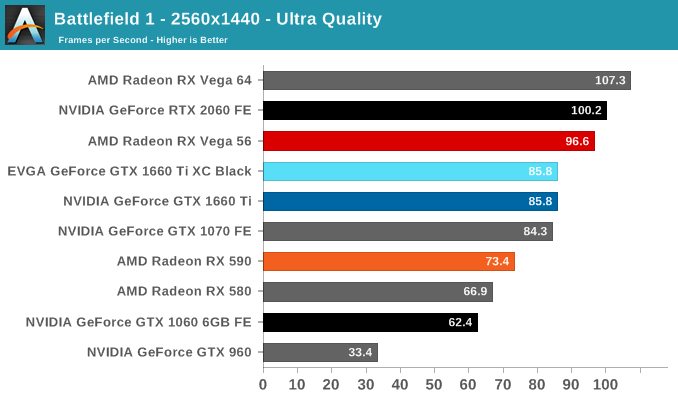
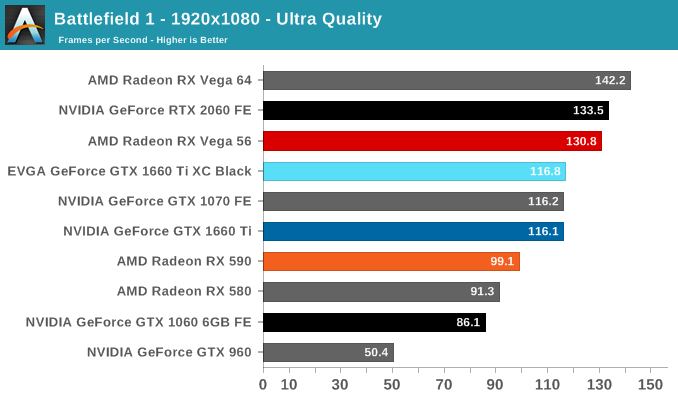
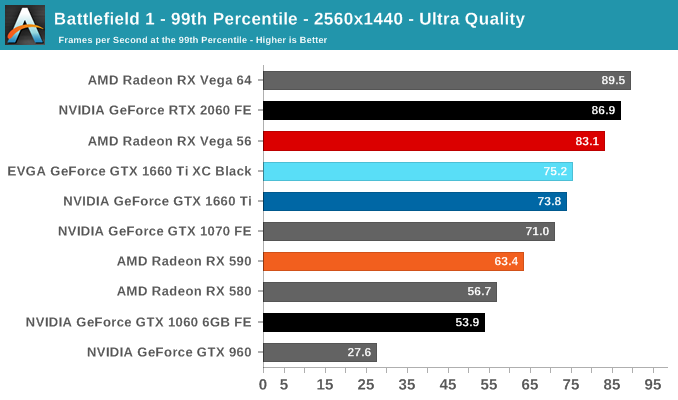
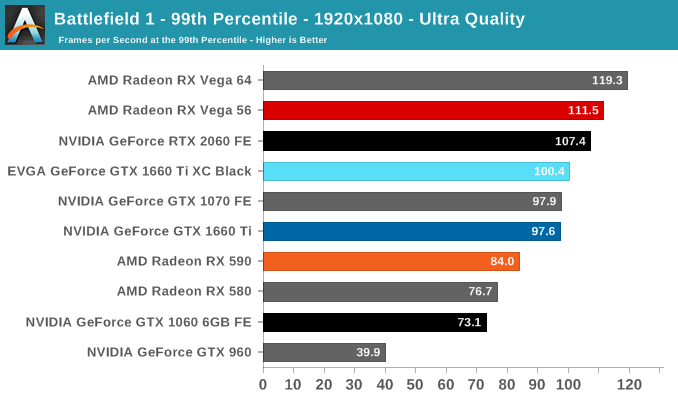
Right from the get-go, the GTX 1660 Ti stakes out its territory in between the RTX 2060 FE and RX 590, leaving the latter by the wayside. And as a result, it technically edges out the GTX 1070 FE, though for all intents and purposes it is a dead heat. The RX Vega 56, however, keeps ahead by decent amount; Battlefield 1 runs well on many GPUs, but Vega cards have always had a strong showing in this title.
The mild +10W TDP of the EVGA XC Black makes an equally mild difference, more so with the 99th percentiles.


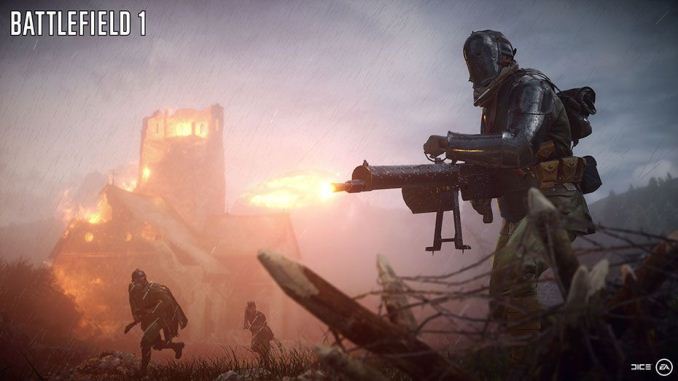








157 Comments
View All Comments
C'DaleRider - Friday, February 22, 2019 - link
Good read. Thx.Opencg - Saturday, February 23, 2019 - link
gtx at rtx prices. not really a fan of that graph at the end. I mean 1080 ti were about 500 about half a year ago. the perf/dollar is surely less than -7% more like -30%. as well due to the 36% perf gain quoted being inflated as hell. double the price and +20% perf is not -7% anandeddman - Saturday, February 23, 2019 - link
They are comparing them based on their launch MSRP, which is fair.Actually, it seems they used the cut price of $500 for 1080 instead of the $600 launch MSRP. The perf/$ increases by ~15% if we use the latter, although it's still a pathetic generational improvement, considering 1080's perf/$ was ~55% better than 980.
close - Saturday, February 23, 2019 - link
In all fairness when comparing products from 2 different generations that are both still on the market you should compare on both launch price and current price. The purpose is to know which is the better choice these days. To know the historical launch prices and trends between generation is good for conformity but very few readers care about it for more than curiosity and theoretical comparisons.jjj - Friday, February 22, 2019 - link
The 1060 has been in retail for 2.5 years so the perf gains offered here a lot less than what both Nvidia and AMD need to offer.They are pushing prices up and up but that's not a long term strategy.
Then again, Nvidia doesn't care much about this market, they are shifting to server, auto and cloud gaming. In 5 years from now, they can afford to sell nothing in PC, unlike both AMD and Intel.
jjj - Friday, February 22, 2019 - link
A small correction here, there is no perf gain here at all, in terms of perf per dollar.D. Lister - Friday, February 22, 2019 - link
Did you actually read the article before commenting on it? It is right there, on the last page - 21% increase in performance/dollar, which added with the very decent gain in performance/watt would suggest the company is anything but just sitting on their laurels. Unlike another company, which has been brute-forcing an architecture that is more than a decade old, and squandering their intellectual resources to design budget chips for consoles. :Pshabby - Friday, February 22, 2019 - link
We didn't wait 2.5 years for such a meager performance increase. Architecture performance increases were much higher before Turing, Nvidia is milking us, can't you see?Smell This - Friday, February 22, 2019 - link
DING !I know it's my own bias, but branding looks like a typical, on-going 'bait-and-switch' scam whereby nVidia moves their goal posts by whim -- and adds yet another $100 in retail price (for the last 2 generations?). For those fans who spent beeg-buckeroos on a GTX 1070 (or even a 1060 6GB), it's The Way You Meant to Be 'Ewed-Scrayed.
haukionkannel - Saturday, February 23, 2019 - link
Do you remember how much cpus used to improve From generation to generation... 3-5%...That was when there was no competition. Now when there is competition we see 15% increase between generations or less. Well come to the future of GPUs. 3-5 % of increase between generations if there is not competition. Maybe 15 or less if there is competition. The good point is that you can keep the same gpu 6 year and you have no need to upgrade and lose money.